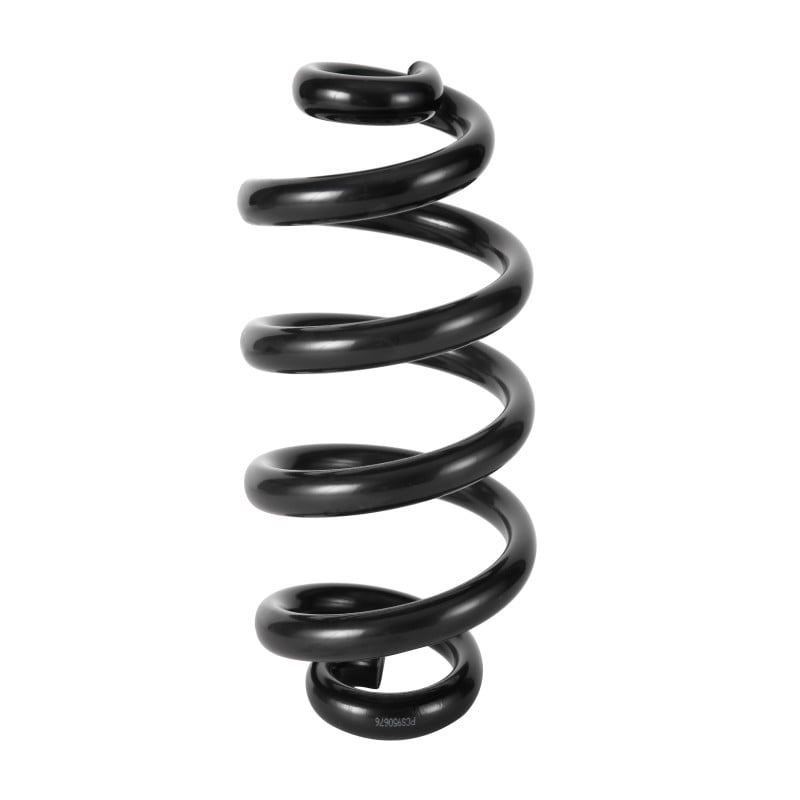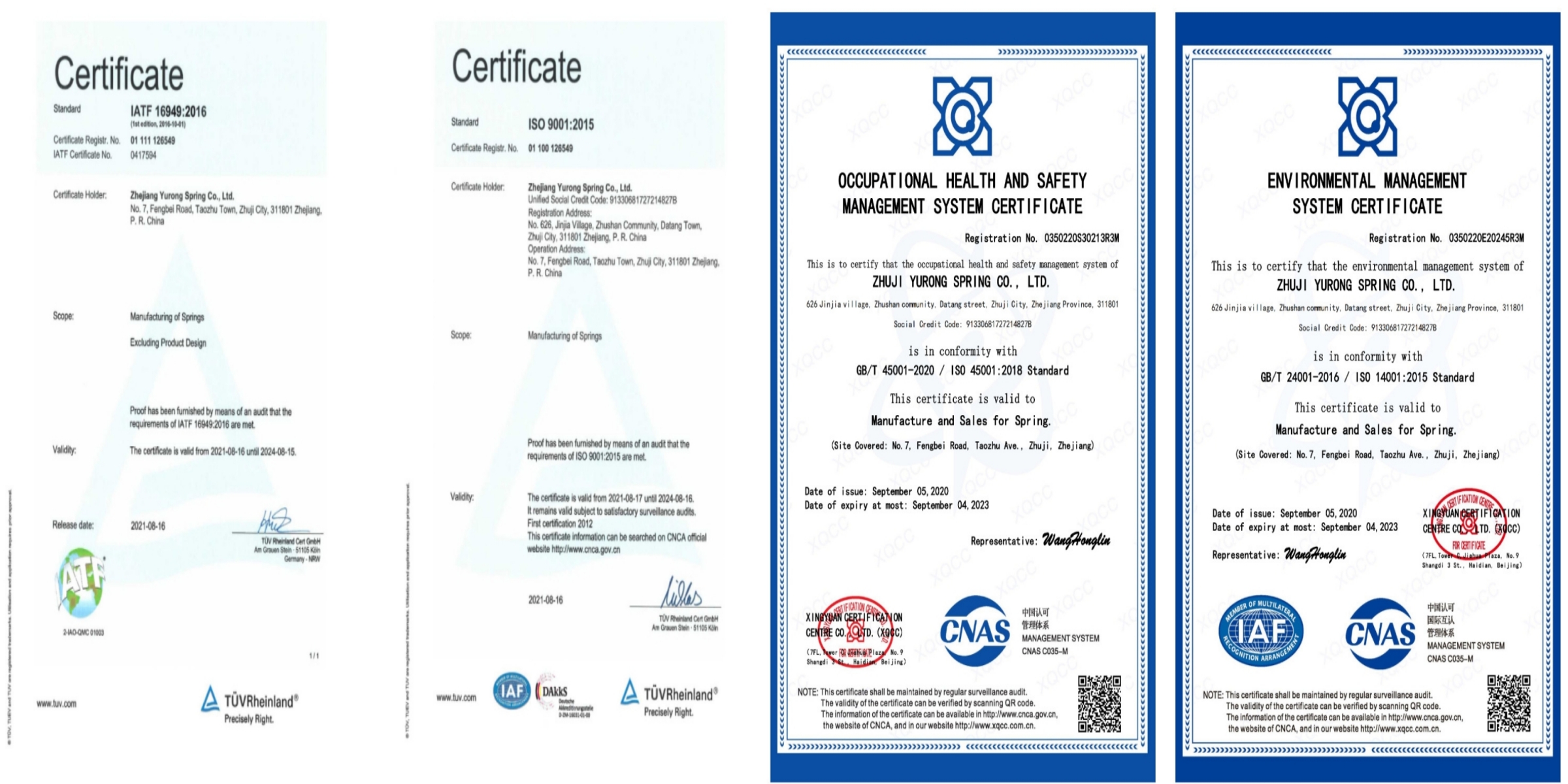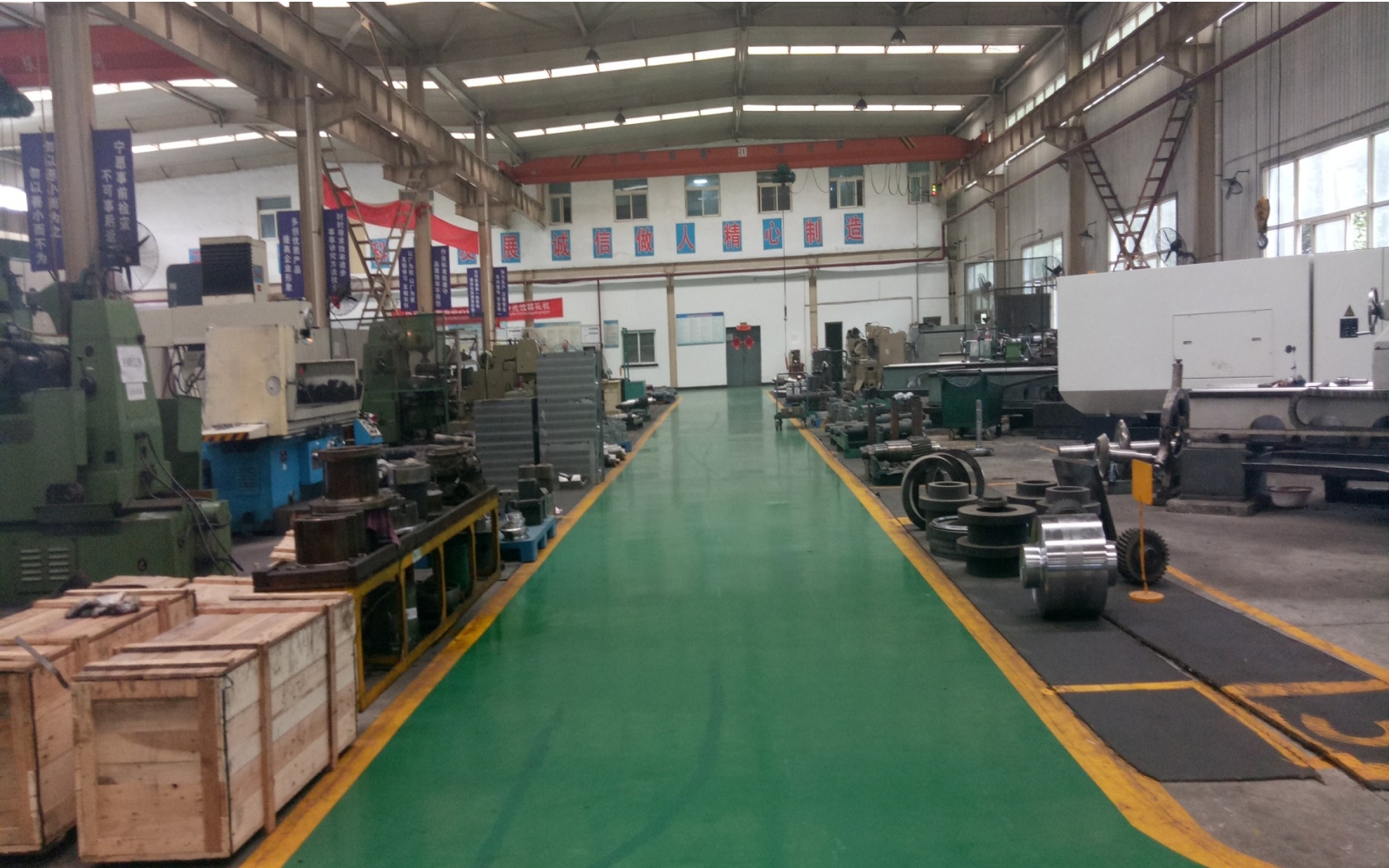
Suspension springs for car
Application:Specialized for customization according to customer requirements, with high rigidity.
Design team and technical team: Our design and technical experts collaborate to provide innovative and meticulously crafted products for clients. We specialize in spring design,manufacturing, and optimization.
One-stop service: Zhejiang Yurong Spring Co., Ltd. builds its own brand in terms of management mode, quality management, and brand image, earning trust and reliability.
Suspension Springs for Car: Everything You Need to Know
Introduction:
Suspension springs play a crucial role in a car's overall performance and comfort. They are responsible for absorbing shocks and vibrations, ensuring a smooth and stable ride. In this article, we will delve into the world of suspension springs, exploring their types, functions, maintenance, and potential upgrades.
1. Types of Suspension Springs:
There are primarily two types of suspension springs used in cars: coil springs and leaf springs. Coil springs are the most common, found in modern vehicles. They are made of steel or composite materials and provide a comfortable ride with enhanced control. Leaf springs, on the other hand, are commonly used in trucks and heavy-duty vehicles. They consist of multiple layers of steel strips and are known for their durability and load-carrying capacity.
2. Functions of Suspension Springs:
Suspension springs serve multiple functions in a car's suspension system. Firstly, they support the vehicle's weight, ensuring it remains at the desired ride height. Secondly, they absorb shocks and vibrations caused by uneven road surfaces, preventing them from being transferred to the passengers. Additionally, suspension springs contribute to the overall stability and handling of the vehicle, allowing for smooth cornering and minimizing body roll.
3. Maintenance and Signs of Wear:
Proper maintenance of suspension springs is essential for optimal performance and safety. Regular inspections should be conducted to check for signs of wear, such as sagging or cracking. Any unusual noises, bouncing, or uneven tire wear can also indicate a problem with the springs. In such cases, it is advisable to have them inspected by a professional and replaced if necessary. Routine maintenance, including lubrication and cleaning, can extend the lifespan of suspension springs and enhance their performance.
4. Upgrades and Performance Enhancements:
For car enthusiasts looking to enhance the performance of their vehicle's suspension, various upgrades are available. Upgrading to high-performance coil springs can significantly improve handling, responsiveness, and overall ride quality. Additionally, adjustable suspension systems allow drivers to customize their car's ride height and stiffness, providing a sportier or more comfortable driving experience. It is important to consider the compatibility of any upgrades with the vehicle's suspension system and seek expert advice if unsure.
Conclusion:
Suspension springs are integral components of a car's suspension system, ensuring a smooth and controlled ride. Understanding their types, functions, maintenance, and potential upgrades can help car owners make informed decisions and optimize their driving experience. Regular inspections and proper maintenance are crucial to detect and address any issues promptly, ensuring the safety and longevity of suspension springs. Whether it's for everyday commuting or high-performance driving, a well-maintained suspension system can make all the difference in a car's performance and comfort.



